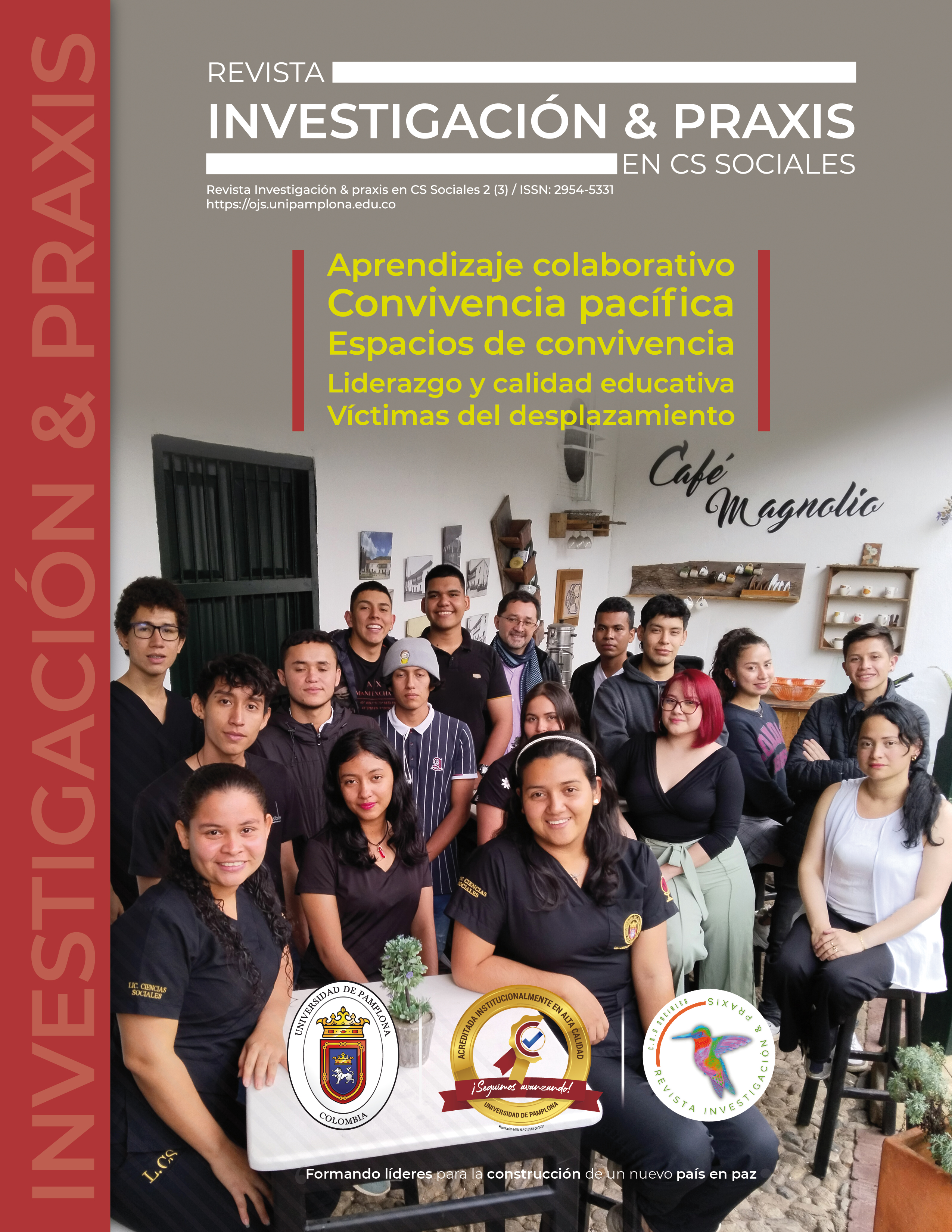Teoría de la paz de Johan Galtung en la educación
DOI:
https://doi.org/10.24054/ripcs.v2i1.2392Palabras clave:
Teorías del conflicto, Paz, EducaciónResumen
Este estudio de revisión bibliográfica examinó la teoría de conflictos de Johan Galtung, sus fundamentos, seguidores y detractores, así como las novedades e implicaciones en su teoría. Se enfocó particularmente en el contexto de la educación para la paz, específicamente en cómo resolver conflictos en el aula de clase. Además, se exploró la aplicación de las 3R de Galtung: reconstrucción, reconciliación y resolución, proporcionó ejemplos, programas y estrategias para implementar esta teoría en el aula de clase, e incluyó una revisión de la aplicación de la teoría de conflictos de Galtung en el contexto educativo en Colombia, destacando el programa Escuelas para la Paz. Concluyó con recomendaciones para la implementación efectiva de la teoría de conflictos de Galtung en entornos educativos.
Referencias
Burrell, S. (2018). Men’s anti-violence activism and the construction of gender-equitable masculinities. Routledge.
Burton, J., & Dukes, F. (1990). Conflict: Readings in management and resolution. Palgrave Macmillan.
Curle, A. (1973). Education for Liberation. Tavistock Publications.
Departamento de Educación de Nueva Gales del Sur. (2022). Peer mediation. Recuperado de https://education.nsw.gov.au/student-wellbeing/attendance-behaviour-and-engagement/behaviour-support-toolkit/support-for-teachers/restorative-practices/peer-mediation
Galtung, J. (1969). Violence, peace, and peace research. Journal of Peace Research, 6(3), 167-191.•Galtung, J. (1996). Peace by peaceful means: Peace and conflict, development and civilization. Sage Publications.
Galtung, J. (2000). Transcend and transform: An introduction to conflict work. Pluto Press.
Kreidler, W. J. (1997). La resolución creativa de conflictos (manual de actividades). Unión Temporal: Centro persona y Familia –Fundación para el Bienestar Humano -SURGIR.
Lederach, J. P. (2014). The art of peace. The On Being Project. Recuperado de https://onbeing.org/programs/john-paul-lederach-the-art-of-peace/
McInerney, W., & Archer, D. (2023). Men’s violence prevention and peace education: Drawing on Galtung to explore the plurality of violence(s), peace(s), and masculinities. Men and Masculinities, OnlineFirst. https://doi.org/10.1177/1097184X221149989.
Mind Tools Content Team. (2023). Win-win negotiation: Finding solutions that work for everyone. Recuperado de https://www.mindtools.com/ajh8pyd/win-win-negotiation.
NATO. (2022). Partnership for Peace programme. Recuperado de https://www.nato.int/cps/en/natolive/topics_50349.htm.
Rosenberg, M. B., & Chopra, D. (2015). Nonviolent communication: A language of life. PuddleDancer Press.
UNESCO. (2022). Culture of Peace and Non-violence. Recuperado de https://en.unesco.org/themes/building-peace-programmes.
UNICEF. (2020). Escuelas en Paz. Recuperado de https://www.unicef.org/colombia/informes/escuelas-en-paz.
UNICEF Colombia | Naciones Unidas en Colombia. (2021). Escuelas en Paz -UNICEF Colombia. Recuperado de https://colombia.un.org/es/157755-escuelas-en-paz-unicef-colombia.•UPB. (2020). Ambiente escolar; convivencia y paz. Recuperado de https://repository.upb.edu.co/bitstream/handle/20.500.11912/5046/Ambiente%20escolar%20convivencia%20y%20paz.pdf?sequence=1.
Publicado
Número
Sección
Licencia
Derechos de autor 2023 Revista Investigación & praxis en CS Sociales

Esta obra está bajo una licencia internacional Creative Commons Atribución 4.0.










